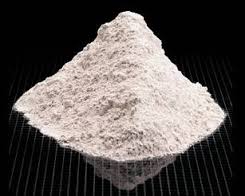Phone:
(701)814-6992
Physical address:
6296 Donnelly Plaza
Ratkeville, Bahamas.
Replacement of Cement In Concrete and Different alternatives will be shown here as tested in 2014 for Civil Engineers. Till now a large number of replacements is noticed in Cement concrete from which some are having positive results too. Here are the top alternatives of cement LIKE FLY ASH, GGBS, CONDENSED SILICA FUMES, WOOD ASH, CERAMIC WASTE, PAPER SLUDGE in Reinforced cement Concrete RCC.
Increasing cost of the construction is due to the high cost of construction materials like cement. As cement is the basic ingredient for concrete with other ingredients i.e., aggregates and water. The cement forms a hard matrix which binds the rest of the ingredients together into a durable stone-like material with many uses.
Greenhouse and Environmental Effects of Cement Concrete.
Due to high cost of cement people are searching for cement replacement materials in concrete. Cement replacement materials are special types of naturally occurring materials or industrial waste products that can be used in concrete mixes to partially replace some of the portland cement. Cement replacement materials are frequently called fine minerals or pozzolans.
Surprisingly, concrete with cement replacement materials can actually be stronger and more durable than concrete with Ordinary Portland cement (OPC).
Different alternatives for cement replacement in concrete are discussed below →

Fly ash is a fine, glass-like powder recovered from gases created by coal-fired electric power generation.
U.S. power plants produce millions of tons of fly ash annually, which is usually dumped in landfills. Fly ash is an inexpensive replacement for portland cement used in concrete, while it actually improves strength, segregation, and ease of pumping of the concrete. Fly ash is also used as an ingredient in brick, block, paving, and structural fills. Fly ash is a pozzolan–a substance containing aluminous and silicious material that forms cement in the presence of water. When mixed with lime and water it forms a compound similar to portland cement. The spherical shape of the particles reduces internal friction thereby increasing the concrete’s fluidity, permitting longer pumping distances. Improved workability means less water is needed, resulting in less segregation of the mixture.
Although fly ash cement itself is less dense than portland cement, the produced concrete is denser and results in a smoother surface with sharper detail.

Ground granulated blast-furnace slag is the granular material formed when molten iron blast furnace slag is quenched. It is a granular product with very limited crystal formation, is highly cementitious in nature and, when ground to cement fineness, hydrates like portland cement. Blast furnace slag cement, which is made by intergrinding the granulated slag with blended cement, has been used for more than 60 years. Its chemical composition is nearly equal to cement. it increases the workability of the concrete.
Condensed silica fume is also known as microsilica, is a byproduct of the reduction of high-purity quartz with coal in electric furnaces in the production of silicon and ferrosilicon alloys. It is also collected as a byproduct in the production f other silicon alloys such as ferrochromium, ferromanganese, ferromagnesium, and calcium silicon. CSF improves compressive strength, bond strength, and abrasion resistance, reduces permeability; and therefore helps in protecting reinforcing steel from corrosion. Due to its extreme fineness, CSF reduces the fluidity of fresh concrete. CSF has been used at cement replacement rates of up to 15%, although the normal rate is 7-10% percent.
Wood ash from bread bakery is also use as a partial replacement for cement in concrete. Wood ash was used to replace 5% – 25% by weight of the cement in concrete. The compressive strength of wood ash concrete increases with curing period and decreases with increasing wood ash content. There was a sharp decrease in compressive strength beyond 10% wood ash substitution. It was concluded that a maximum of 10% wood ash substitution is adequate for use in structural concrete. Various experiments evaluated that the chemical composition of wood ash is same as the ordinary portland cement. It also increases the compressive strength and workability of the oncrete.
Ceramic waste is durable, hard and highly resistant to biological, chemical, and physical degradation forces. Ceramic wastes are generated as a waste during the process of dressing and polishing. Ceramic waste can be used in concrete to improve its strength and other durability factors. Ceramic waste can be used as a partial replacement of cement or as a partial replacement of fine aggregate sand as a supplementary addition to achieve different properties of concrete.
Comment below must with the Replacement idea you have found for cement replacement.
We are happy to assist you. Stay tuned.
Incoming search terms-
Replacement of Cement In Concrete|Different alternatives 2014